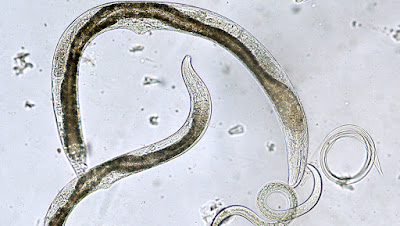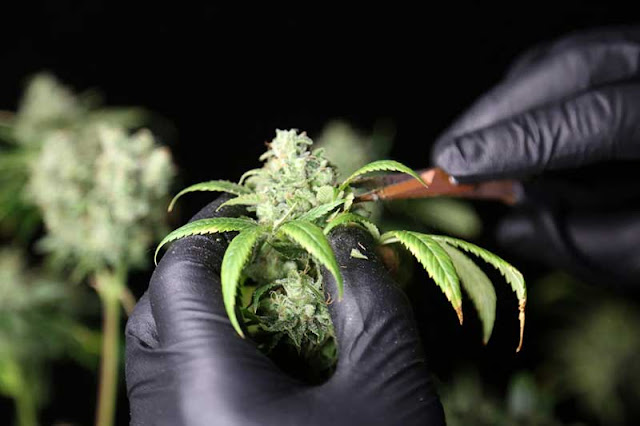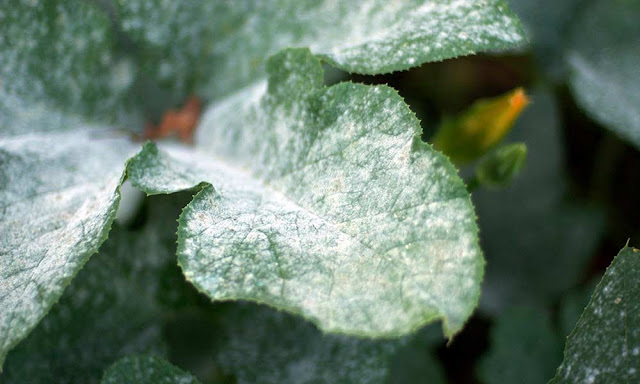Are the Nematodes A Friend Or A Foe?
 |
| Nematodes |
While most of the thousands of species of nematodes on Earth are not harmful, some nematodes parasitize and cause diseases in humans and other animals as well as attack and feed on living plants. However, there are ways to deter these pesky pests from disrupting your garden—like planting Marigolds To Protect Your Melons.
While most nematodes are beneficial, a few species of these translucent, unsegmented worms are plant parasites. Pest species are only about 1/50 inch long and cause root knots or galls, injured root tips, excessive root branching, leaf galls, lesions or dying tissue, and twisted, distorted leaves. Plants most commonly attacked at the roots include tomatoes, potatoes, peppers, lettuce, corn, and carrots. Plants that sustain leaf and stem injury include chrysanthemums, onions, rye, and alfalfa.
What Are They?
Often described as wormlike, nematodes are not closely related to true worms. They are multicellular animals with smooth, unsegmented bodies. The nematode species that feed on plants are so tiny that you need a microscope to see them. They are often long and slender, although some species appear pear-shaped.
Often described as wormlike, nematodes are not closely related to true worms. They are multicellular animals with smooth, unsegmented bodies. The nematode species that feed on plants are so tiny that you need a microscope to see them. They are often long and slender, although some species appear pear-shaped.
Some nematodes feed on the outside surfaces of a plant while others burrow into plant tissue. While soil-dwelling nematodes are the most common culprits, some species can damage stems, foliage, and flowers.
No matter where they feed, these tiny creatures can seriously damage plants with their sharply pointed mouth that they use to puncture cell walls. The real damage occurs when a nematode injects saliva into a cell from its mouth and then sucks out the cell contents. The plant responds with swellings, distorted growth, and dead areas. Nematodes can also carry viruses and inject them into plants. The feeding wounds they make also provide an easy entrance point for bacteria and fungi.
Beneficial nematodes that help to create the idea of Living Soil may feed on decaying material, insects, or other nematodes.
Related: Deter Garden Pests Naturally
What You See
Unlike most other disease-causing organisms, plant-parasitic nematodes seldom produce any characteristic symptoms. Most of the symptoms that do appear are vague and often resemble those caused by other factors—such as viruses, nutrient deficiencies, or air pollution. Nematodes feeding aboveground may cause leaves, stems, and flowers to be twisted and distorted.
Unlike most other disease-causing organisms, plant-parasitic nematodes seldom produce any characteristic symptoms. Most of the symptoms that do appear are vague and often resemble those caused by other factors—such as viruses, nutrient deficiencies, or air pollution. Nematodes feeding aboveground may cause leaves, stems, and flowers to be twisted and distorted.
If nematodes are feeding on roots, a plant may be yellowed, wilted, or stunted and infected food crops will usually yield poorly. If you suspect nematode injury to roots, carefully lift one of the infected plants and wash off the roots for easier inspection. If nematodes are causing damage, you may see small galls or lesions, injured root tips, root rot, or excessive root branching.
How They Spread
Whether they feed above or belowground, most nematodes spend at least part of their life cycle in the soil. While they can’t move very far under their own power, they can swim freely in water and they move more quickly in moist soil—so it's a good idea to keep your soil well-drained, but What The Heck Does Well-Drained Soil Actually Mean? They also spread by anything that can carry particles of infested soil, including tools, boots, animals, and infected plants.
Whether they feed above or belowground, most nematodes spend at least part of their life cycle in the soil. While they can’t move very far under their own power, they can swim freely in water and they move more quickly in moist soil—so it's a good idea to keep your soil well-drained, but What The Heck Does Well-Drained Soil Actually Mean? They also spread by anything that can carry particles of infested soil, including tools, boots, animals, and infected plants.
Beneficial Nematodes
Beneficial nematodes are slender, translucent, can range from 1/25 inch to several inches long and have unsegmented bodies. Their roles in the garden vary. Some are soil dwellers that break down organic matter and are common in a compost pile. These decomposers are easily visible and they are about ¼ inch long. These types of nematodes are effective against a variety of pests including weevils, clearwing borers, cutworms, sod webworms, chinch bugs, and white grubs. Nematodes can attack and kill these insects by either injecting bacteria that kills the host within 24-48 hours or by entering the host, parasitizing, and feeding on it. When purchasing and applying them to your garden, it is very important to select the right species of nematode because different species are effective against different pests. In addition, nematodes require moist, humid conditions, and fairly warm soil to be most effective. Water all application sites before and after spreading nematodes and follow application instructions carefully.
Beneficial nematodes are slender, translucent, can range from 1/25 inch to several inches long and have unsegmented bodies. Their roles in the garden vary. Some are soil dwellers that break down organic matter and are common in a compost pile. These decomposers are easily visible and they are about ¼ inch long. These types of nematodes are effective against a variety of pests including weevils, clearwing borers, cutworms, sod webworms, chinch bugs, and white grubs. Nematodes can attack and kill these insects by either injecting bacteria that kills the host within 24-48 hours or by entering the host, parasitizing, and feeding on it. When purchasing and applying them to your garden, it is very important to select the right species of nematode because different species are effective against different pests. In addition, nematodes require moist, humid conditions, and fairly warm soil to be most effective. Water all application sites before and after spreading nematodes and follow application instructions carefully.
From:http://www.rodalesorganiclife.com/garden/nematodes-friend-or-foe


评论
发表评论